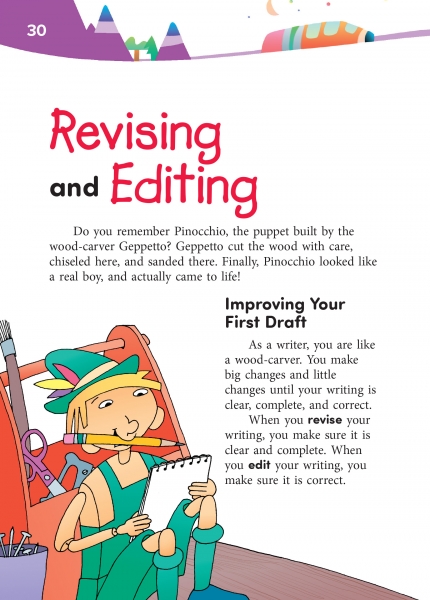Page 039 from

Start-Up Activity
Revising is a very important part of the writing process. Not only because it provides an opportunity to make a draft better, but also because it frees the writer to try different things during the drafting step.
Share with the class a brief story that contains a few obvious problems with its structure and ideas. Ask students what changes they would make to improve the story. Inform students that making changes and improvements—as they have been doing in this activity—is what revising is all about. Then read and discuss the chapter introduction.
Think About It
“One thing revising shows you is that there are usually many ways to say the same thing.”
—Nancy Garden

Start-Up Activity
Revising is a very important part of the writing process. Not only because it provides an opportunity to make a draft better, but also because it frees the writer to try different things during the drafting step.
Share with the class a brief story that contains a few obvious problems with its structure and ideas. Ask students what changes they would make to improve the story. Inform students that making changes and improvements—as they have been doing in this activity—is what revising is all about. Then read and discuss the chapter introduction.
Think About It
“One thing revising shows you is that there are usually many ways to say the same thing.”
—Nancy Garden

